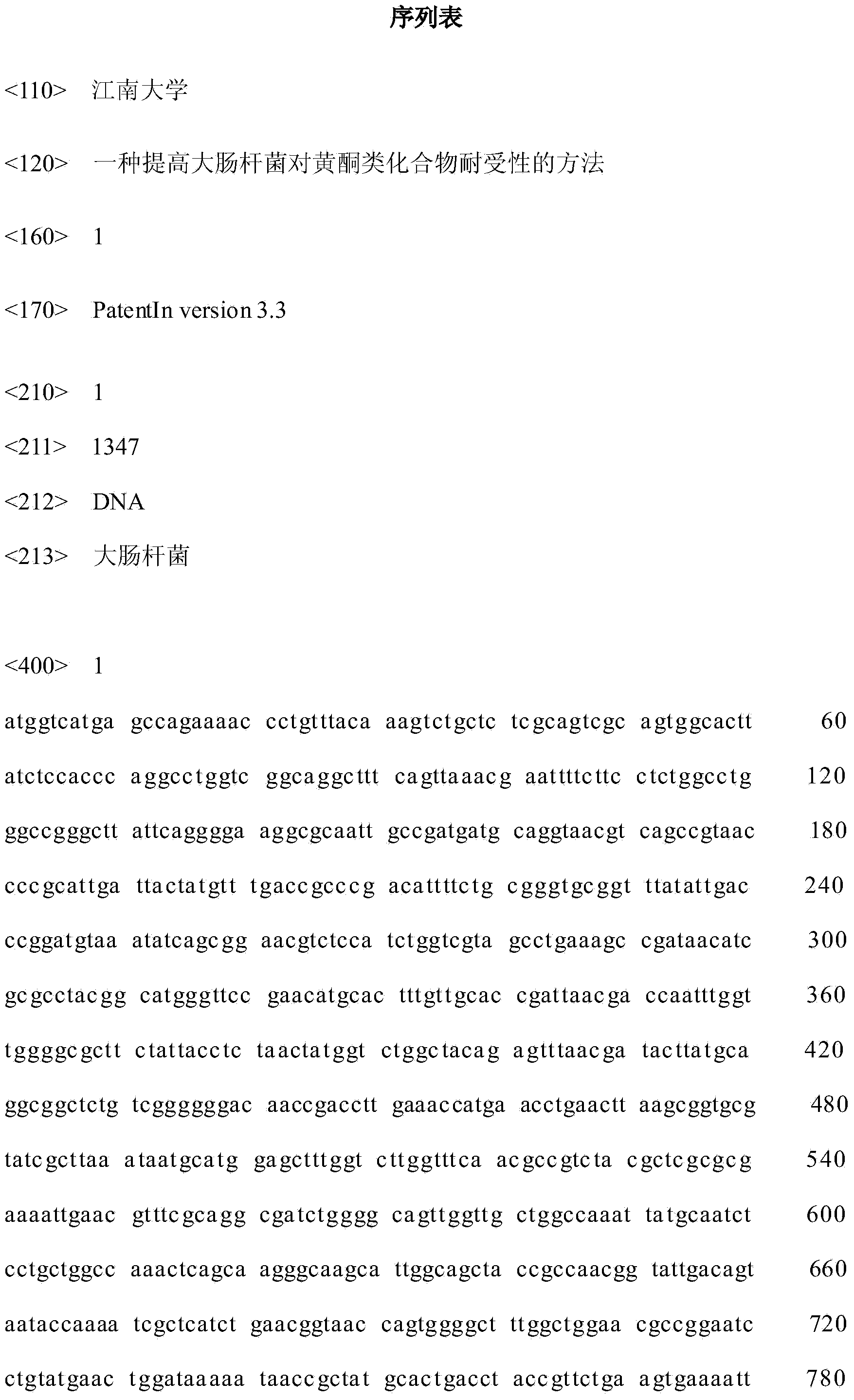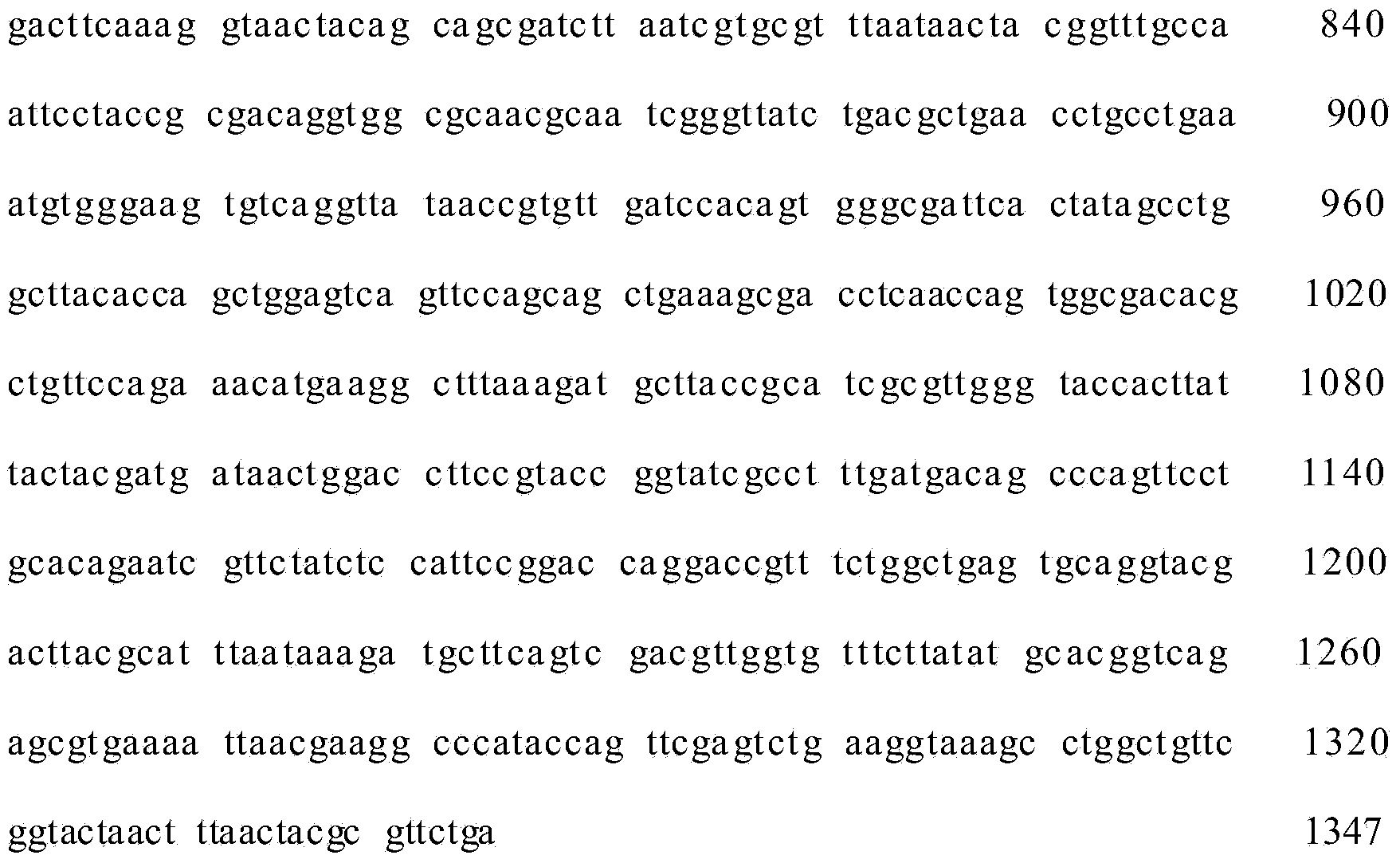Method for improving tolerance of Escherichia coli to flavonoids compounds
A technology of flavonoids and Escherichia coli, applied in the field of genetic engineering, can solve the problems of unfavorable production, low content, complex chemical synthesis method and the like
- Summary
- Abstract
- Description
- Claims
- Application Information
AI Technical Summary
Problems solved by technology
Method used
Image
Examples
Embodiment 1
[0015] The discovery of embodiment 1FadL
[0016] Use an inoculation needle to pick a single colony on the E.coli BL21 (DE3) plate and inoculate it in 25 mL of LB medium, and activate it for 12 hours. Inoculate 4 bottles of 25mL LB medium according to the inoculum amount of 1%, place them in a shaker (200rpm) at 37°C and culture until the stable phase, and add 25μL 0.1g / L rutin or naringenin or resveratin to three of the bottles respectively Resveratrol (dissolved in DMSO), another bottle was added with 25 μL DMSO as a control, after 3 hours of culture, 8000rpm low-temperature centrifugation collected the bacteria, washed 3 times with deionized water and followed the FOCUS TM The GlobalFractionation manual extracts membrane proteins, and removes ions in protein samples with a 2-D Clean-Up kit, and finally uses a non-interfering protein concentration determination kit to measure the concentration in the sample, and finally hydrates and loads the sample at a concentration of 80...
Embodiment 2
[0017] Embodiment 2 Construction of flavonoid-resistant engineering bacteria
[0018] According to the gene sequence of fadL in NCBI, primers were designed for amplification, respectively connected to the cloning vector pMD19-T for sequencing, and after obtaining the correct transformants, they were double digested and connected to the plasmid pACYC-Duet1 to construct the recombinant plasmid pACYC-fadL. The constructed expression vector was transformed into E.coli JM109, spread on the LB medium containing chloramphenicol (yeast extract 5g / L, peptone 10g / L, NaCl10g / L, solid medium plus 20g / L agar, 121 Sterilize at ℃ for 15 minutes), pick the transformant on the transformed plate for PCR verification, obtain the correct single colony for fermentation and extract the plasmid, transfer the plasmid into E. On the LB medium, pick the transformants on the plate after transformation and carry out PCR verification. The correct single colony is the recombinant strain, that is, the E.col...
Embodiment 3
[0019] Example 3 Determination of growth curve of highly tolerant flavonoids E.coli BL21 (DE3) engineered bacteria
[0020] Pick engineering bacteria and E.coli BL21 (DE3) single colonies containing empty plasmid pACYC-Duet1 and inoculate them into M9 medium containing chloramphenicol (13.3g / L M9CA Broth, 0.2% glucose, 1mM magnesium sulfate, 0.5μg / mL thiamine-HCl) after activation for 10 h, insert 1% chloramphenicol, 1 g / L flavonoids (rutin or naringenin or resveratrol), and different concentrations of IPTG ( 0, 100, 200, 400μM) in M9 medium, cultured at 30°C 200rpm, measure OD every 1h 600 until the strain grows to a stationary phase. According to the formula μ=d x / x*d t Calculate the specific growth rate map of the strain, and then obtain the maximum specific growth rate μ max , it was found that the μ of engineering bacteria in the environment with 1g / L rutin max is 0.486, while that of the original bacterial strain is 0.24, and the growth rate is increased by 2.0 ti...
PUM
 Login to View More
Login to View More Abstract
Description
Claims
Application Information
 Login to View More
Login to View More - R&D
- Intellectual Property
- Life Sciences
- Materials
- Tech Scout
- Unparalleled Data Quality
- Higher Quality Content
- 60% Fewer Hallucinations
Browse by: Latest US Patents, China's latest patents, Technical Efficacy Thesaurus, Application Domain, Technology Topic, Popular Technical Reports.
© 2025 PatSnap. All rights reserved.Legal|Privacy policy|Modern Slavery Act Transparency Statement|Sitemap|About US| Contact US: help@patsnap.com


